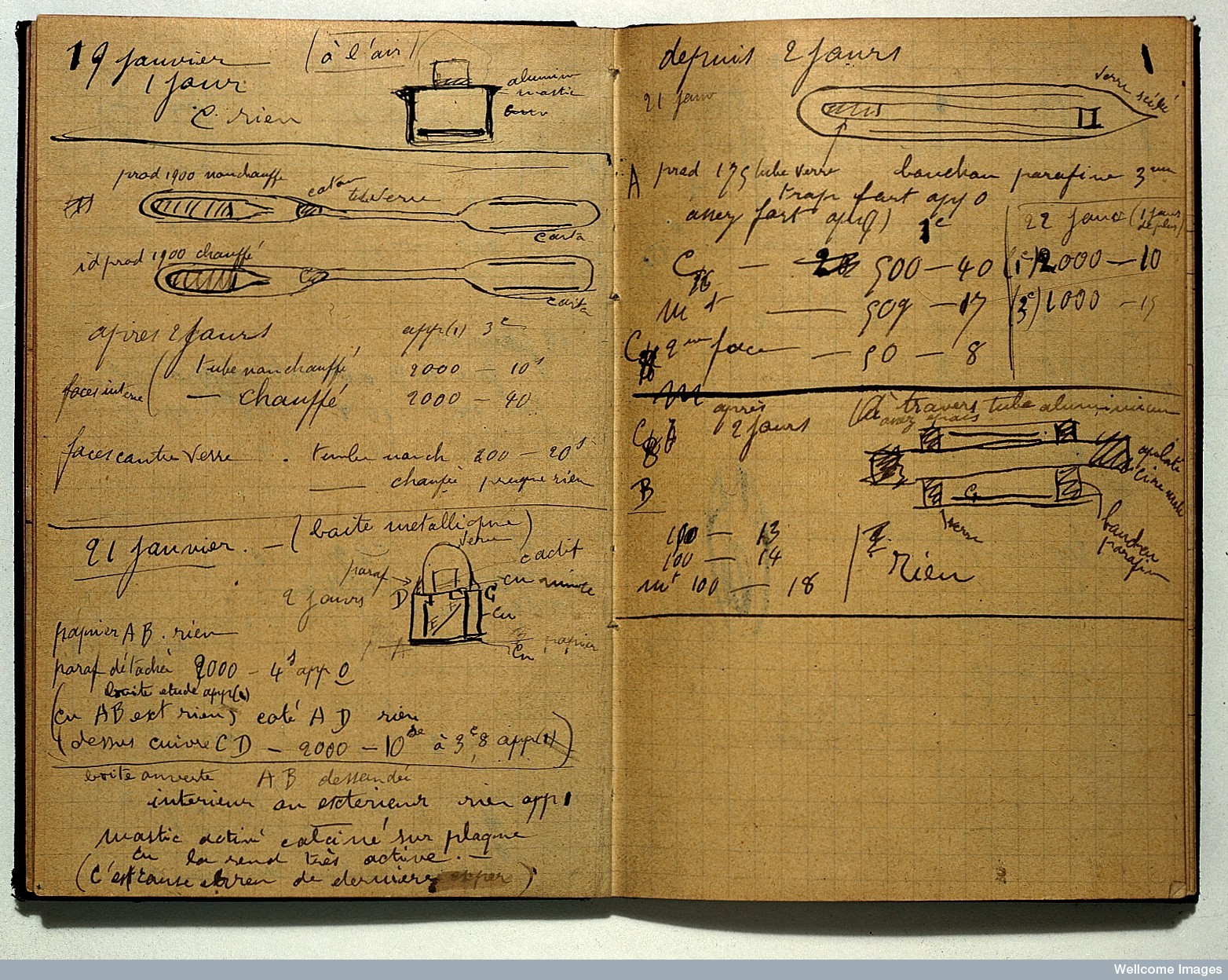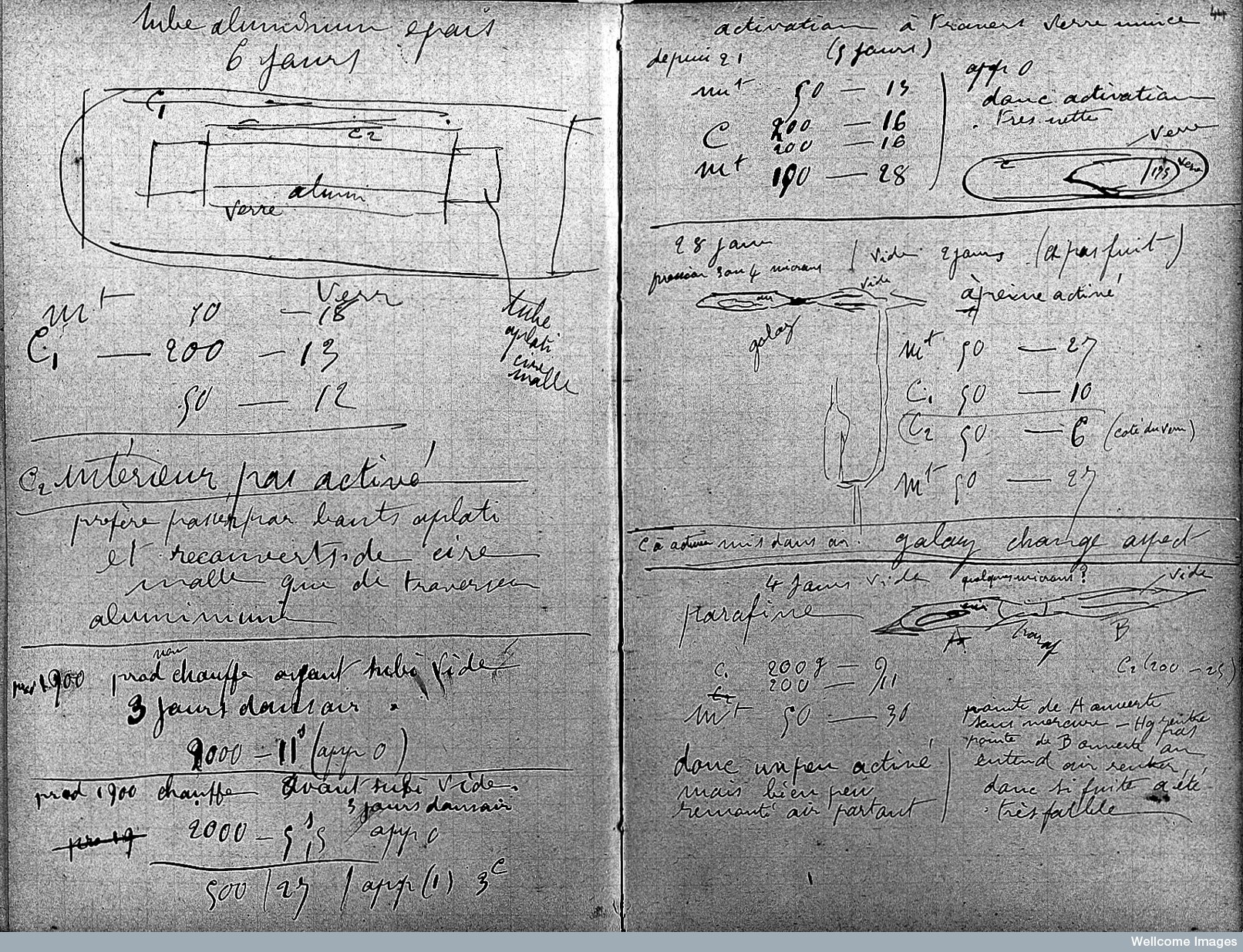In 1903 she won her first Noble prize for rendering extraordinary services in Physics wherein she had carried forward the research work of Henri Becquerel, a French physicist who had discovered the unique property of element uranium which could emit rays. Later in 1911 she was awarded a second Noble prize for her extraordinary services in the field of Chemistry where she discovered radioactive elements like radium and polonium. In a way, the discoveries made by Curie were also the reason due to which she died. Curie died from ‘aplastic anaemia‘ which is a very rare condition that occurs due to prolonged exposure to extremely higher levels of radioactive elements. It was in the year 1898, when the intellectual pair comprising of Marie Curie and Pierre Curie, French physicist and Marie’s husband together discovered a ‘new radioactive element’ which was named “Polonium” after Poland, since Marie originally was a native of this country.
Marie Curie’s life was totally flooded in ionizing radiation. It seems she would be seen carrying bottles of the polonium and radium in the pockets of her coat and even stored them in the drawer of her desk. In his book “The Vertigo Years: Europe, 1900-1914” historian Philipp Blom has given the reference of some quotes taken from Marie Curie’s autobiography wherein Curie has described the mystifying blue green lights seen in her laboratory: In fact, during the early stages of their discovery the duo realized that the luminescent material in the tubes had the capacity to electrify the air, it could break down into positive and negative ions and thus create weak electric current which was termed as ‘radioactivity’ by these physicians. However, their experiment also opened up a new branch of physics known as Particle Physics because till then atom was considered to be the smallest constituent of matter and the duo discovered even smaller particles that is the ‘ions’. During the initial stages, the duo considered the material to be beneficial for curing cancer and hence it was being incorporated into most of consumer products right from toothpaste till laxatives! Later in 1938, thanks to Food, Drug, and Cosmetic Act, the radioactive consumer products were banned. In his book, “A Short History of Nearly Everything”, author Bill Bryson mentions that even after a century, Curie’s personal effects, which includes her clothes, furniture, laboratory note books and even her cook-books continue to be radioactive. Curie’s personal belongings are considered as national and scientific treasures; till date her laboratory note-books have been preserved in special lead-lined boxes at France’s Bibliotheque National in Paris. According to the reports of Christian Science Monitor: Though visitors are granted permission to view Curie’s manuscripts kept at the library, it is mandatory for the visitors to sign a ‘liability waiver’ as well as ‘wear protective gear’ because all these belongings are believed to be contaminated with ‘radium 226’ which has a half life of about 1,600 years. Thus we can say Marie Curie’s personal belongings will continue to be radioactive for another 1,500 years.
Curie’s body too is considered to be radioactive and hence it has been placed in a coffin which is coated with an inch of lead. The duo have been buried in France’s Panthéon, a mausoleum in Paris where some of the distinguished French citizens such as philosophers Rousseau and Voltaire are also buried. Presently physicists and scientists have a better understanding of these radioactive elements and hence it finds its applications in medicine as well as nuclear power. Besides, radioactive materials are also used for the purpose of sterilizing fruits and vegetables, for calculating the age of organic materials and many other fields. Marie and Pierre were not aware of the dangerous effects of radioactive elements and thus all the while during their research they were constantly being flooded into radiations which is the reason why their personal belongings will continue to be radioactive for another 1,500 years!

